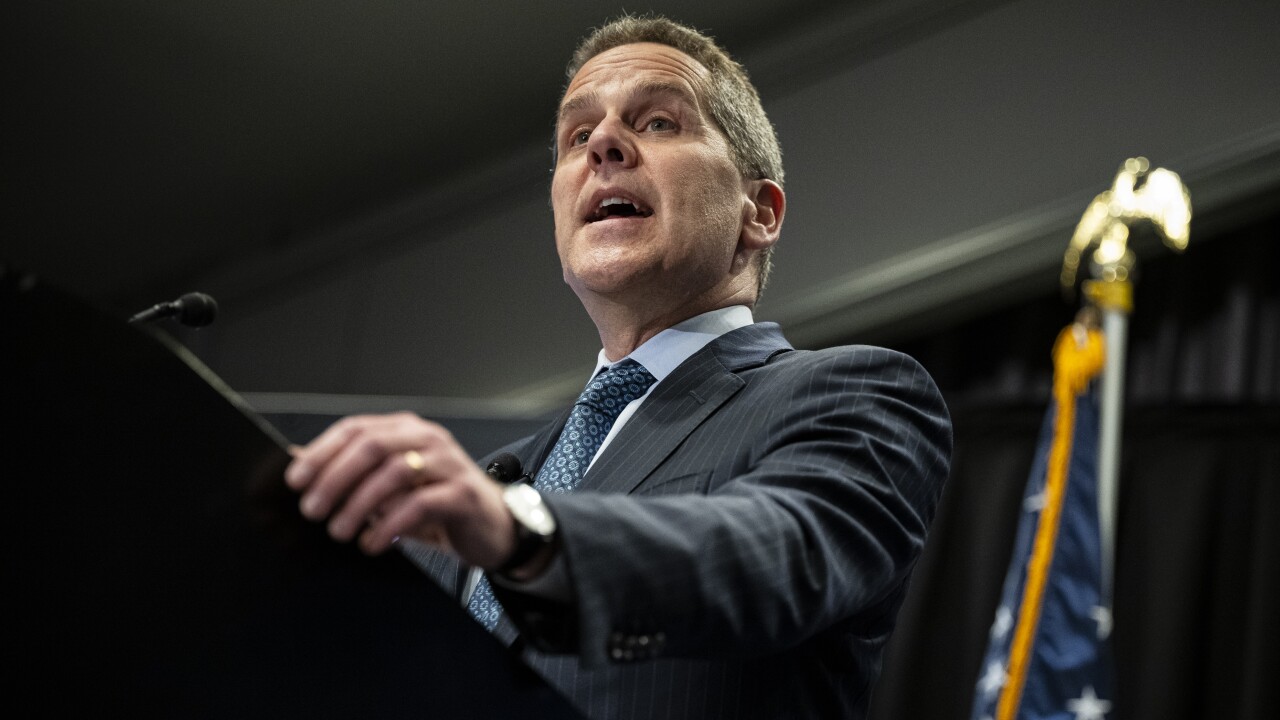
Many of the nation's less-creditworthy small businesses are falling into the open arms of online lenders. And while most of these applicants are getting approved, few of them come away happy.
Those are among the key findings of an extensive new survey by seven regional Federal Reserve banks. More than 3,400 small businesses of various sizes participated in the survey, which adds to the mounting evidence that online lenders have become an important financing source for firms with less than $1 million in annual revenue, as banks have retreated from that market.
Of all the small businesses that applied for a loan or line of credit within the past year, 20% said they sought credit from an online lender. The application rates were higher at the smaller firms; 30% of companies with less than $100,000 in revenue said they had applied to an online lender.
-
A significant gap remains between the credit scores of women-owned companies and those owned by men, according to a Biz2Credit.com survey.
March 3 -
Antonio Weiss, a counselor to Treasury Secretary Jack Lew, called Thursday for greater transparency in the pricing of online small-business loans.
October 29 -
In a rapidly growing market outside the purview of the Truth in Lending Act or state usury caps, online lenders' rates and fees can be next to impossible to compare.
August 26 -
Lending Club and Funding Circle are among the firms pledging to adhere to a range of self-imposed standards in small-business lending.
August 6
Online lenders approved 71% of the applicants for at least some credit, according to the survey. But just 15% of the businesses that got approved reported being satisfied.
That compared to a satisfaction rate of 51% for large banks and 75% for small banks.
"Among successful applicants, you do see quite stark differences in the satisfaction rates at online lenders versus small banks versus large banks," said Claire Kramer Mills, assistant vice president at the Federal Reserve Bank of New York, one of the regional Fed banks that conducted the survey.
The two most common reasons that successful applicants cited for their dissatisfaction with online lenders were high interest rates and unfavorable repayment terms, a catchall category that could include prepayment penalties.
Online lenders that cater to small businesses are sometimes called marketplace lenders or alternative lenders. They offer a wide variety of products — from term loans and lines of credit to invoice financing and merchant cash advances.
What those products frequently have in common is that they are far pricier than bank loans. Of course, it makes sense that online lenders charge higher interest rates, since their customers are often young, relatively high-risk borrowers that have been rejected by banks.
"The folks who are going to marketplace lenders are not necessarily happy with the interest rates offered to them. At the same time, there is an aspect of risk-based pricing here that I don't want to discount," Kramer Mills said.
The survey results come on the heels of a
The earlier report, released in August, found that small-business owners who participated in focus groups about online loans were often baffled by the terms being offered. Unlike consumer lenders, small-business lenders are not required to disclose annual percentage rates, and many do not.
"Virtually all the focus group participants said they want clearly stated product features and costs and an easier way to compare product offerings," the earlier report stated.
Online lending to small businesses, a category led by firms like OnDeck Capital, CAN Capital and Kabbage, has grown rapidly in order to fill a void left by banks. Big banks in particular tend to be reluctant to lend to less established small businesses.
The Fed survey released Thursday was a joint project of the Federal Reserve banks of New York, Atlanta, Boston, Cleveland, Philadelphia, Richmond and St. Louis.
It found that large banks approved 88% of business applicants that had more than $10 million in annual revenue, but only 33% of applicants with less than $100,000 in revenue. Meanwhile, small banks approved 96% of applicants with more than $10 million in annual revenue and 60% of applicants that brought in less than $100,000 per year.
Separate data compiled by Rebel Cole, a finance professor at DePaul University, shows that big banks have substantially shrunk their small-business lending since the financial crisis.
Cole found that in 2006, Bank of America originated nearly $25 billion of loans for $1 million or less. By 2014, that number was around $12 billion.
Similarly, in 2007 Wells Fargo originated more than $46.6 billion of loans for $1 million or less. That figure fell to less than $22 billion in 2014, according to Cole's analysis. Numerous other big banks also showed large declines.
"They just don't want to do those small loans under $1 million anymore," Cole said in a recent interview. The reason, he added, is that it costs banks just as much to underwrite a smaller business loan as it does to underwrite a larger one.
The Fed survey, which covered 26 states, found significant geographic variation in the sources of credit for small businesses. The state-by-state differences suggest that online lenders are finding fewer prospects in places where banks say "yes" more frequently.
For example, only 8% of the small businesses surveyed in Ohio reported applying to an online lender. Small businesses in the Buckeye State also reported that banks approved their applications at a rate that exceeds the national average.
Meanwhile in Florida, 35% of the small businesses surveyed said they had applied to an online lender. Those same small businesses reported that banks approved their applications at a rate below the national average.





